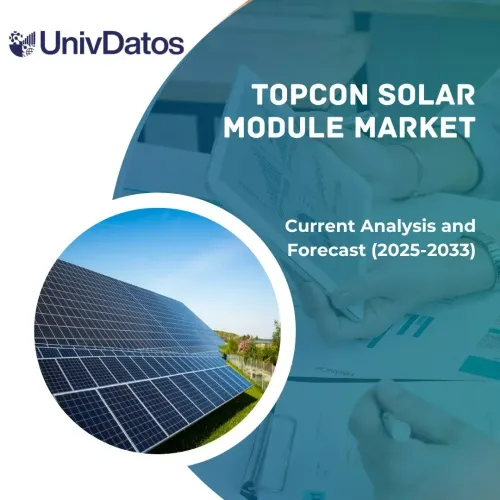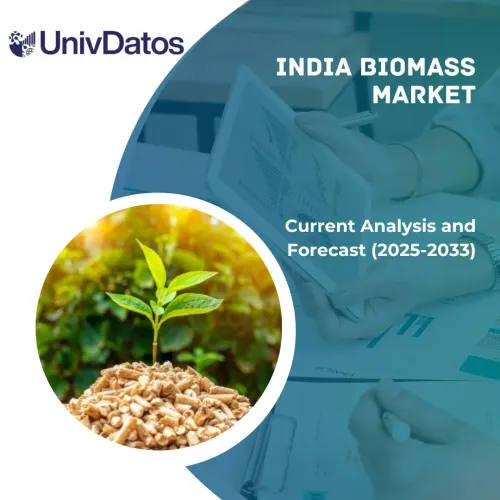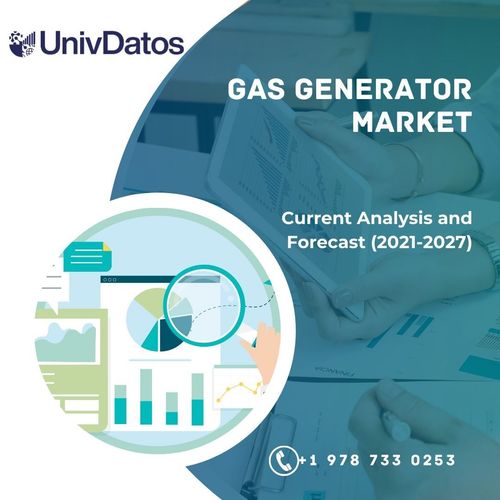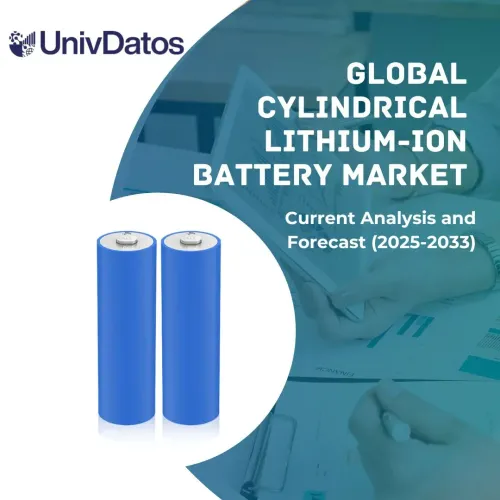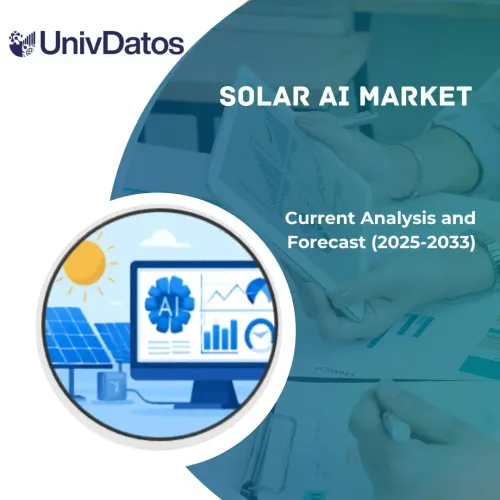- Home
- About Us
- Industry
- Services
- Reading
- Contact Us
Regenerative Turbine Pump Market: Current Analysis and Forecast (2023-2030)
Emphasis on Product (Single Stage and Multistage), Priming (Self-Priming and Auto Priming), Capacity (<10 GPM, 10 – 30 GPM, 30 – 60 GPM, and > 60 GPM), Application (Agriculture, Chemical Plants, Building & Construction, Water & Wastewater, Industrial, Oil & Gas, and Others) and Region/Country
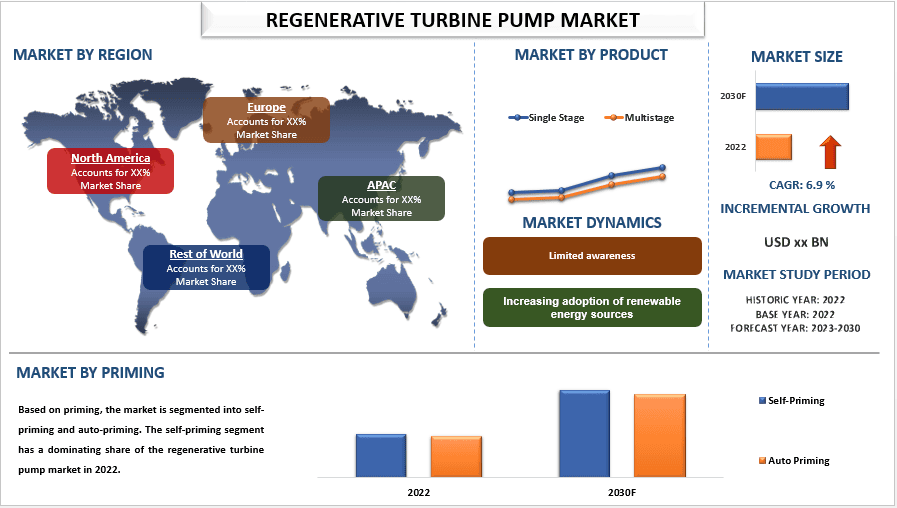
The regenerative turbine pump market is expected to grow at a strong CAGR of around 6.9 % during the forecast period. The global regenerative turbine pump market has witnessed significant growth over the past few years, with key drivers shaping its current scenario. The market’s growth is driven by the growing trend towards digitalization and Industry 4.0 is also driving the growth of the regenerative turbine pump market. The integration of IoT sensors and data analytics into these pumps allows for real-time monitoring and optimization of their performance, leading to improved efficiency and reduced maintenance costs. Moreover, the increasing investment in renewable energy sources such as wind and solar power is creating new opportunities for regenerative turbine pumps in these sectors. As these sources become more prevalent, the demand for pumps that can efficiently handle the fluids used in these systems will also increase. Finally, the ongoing technological advancements in materials science and engineering are enabling the development of more efficient and reliable regenerative turbine pumps. For example, the use of advanced materials such as ceramic and polymer composites allow for the creation of lightweight and corrosion-resistant pumps that can operate at higher temperatures and pressures.
Some of the major players operating in the market include TEIKOKU ELECTRIC MFG.CO., LTD., MTH Pumps, Pentair, SPECK Pumpen Verkaufsgesellschaft GmbH, Roth Pump Co., Corken – Advanced Flow Solutions, Inc., Magnatex Pumps, Inc., Crane Pumps & Systems, Iwaki America Inc., and Viking Pump, Inc. Several M&As along with partnerships have been undertaken by these players to facilitate customers with hi-tech and innovative products/technologies.
Insights Presented in the Report
“Amongst product, the multistage segment held significant growth in the market in 2022.”
Based on product, the market is segmented into single-stage and multistage. Amongst these, the multistage segment held significant growth in the market in 2022. This growth is because these pumps are designed with multiple stages of impellers that increase the pressure of the fluid being pumped in a series of steps. This design allows for higher pressures and flow rates compared to single-stage pumps, making them ideal for applications that require high-pressure performance, such as water supply systems, chemical processing, and oil refining.
“Amongst priming, the auto priming segment held the significant growth of the market in 2022.”
Based on priming, the market is segmented into self-priming and auto-priming. Among these, the auto-priming segment held significant growth in the regenerative turbine pump market in 2022 because auto-priming pumps can quickly resume operation after shutdown, reducing downtime and increasing productivity. This is particularly important in applications where the pump needs to operate continuously, such as in water supply systems or chemical processing plants. The adoption of auto-priming technology is not limited to traditional industries like water treatment and chemical processing. Its versatility has led to its integration into new applications like agricultural irrigation and residential water supply systems, further driving market growth.
“Europe is experiencing a significant share in the regenerative turbine pump market in 2022.”
Europe has been actively promoting the use of renewable energy sources, such as wind and solar power, to reduce its reliance on fossil fuels and mitigate climate change. Regenerative turbine pumps, which use kinetic energy from the water or air to generate electricity, are becoming more popular as they can provide a reliable and sustainable source of energy. For instance, in 2022, GEA launched its newest regenerative fuel pump series, which features advanced automation capabilities and improved energy efficiency. These pumps are designed for use in a variety of industries, including chemical processing, oil and gas, and power generation. Many European governments offer financial incentives and subsidies to encourage the adoption of renewable energy technologies, including regenerative turbine pumps. These incentives can help offset the initial costs of investing in these pumps, making them more accessible to a wider range of users. Moreover, regenerative turbine pumps offer a clean and sustainable alternative to traditional pumping systems, making them an attractive option for environmentally conscious consumers and businesses. All these factors contribute to the significant share of Europe’s regenerative fuel pump market.
Regenerative Turbine Pump Market Report Coverage
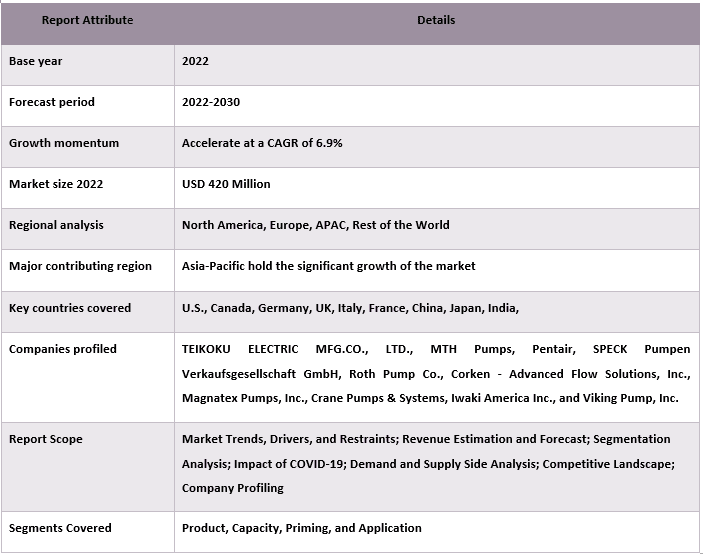
Reasons to buy this report:
- The study includes market sizing and forecasting analysis validated by authenticated key industry experts.
- The report presents a quick review of overall industry performance at one glance.
- The report covers an in-depth analysis of prominent industry peers with a primary focus on key business financials, product portfolios, expansion strategies, and recent developments.
- Detailed examination of drivers, restraints, key trends, and opportunities prevailing in the industry.
- The study comprehensively covers the market across different segments.
- Deep dive regional level analysis of the industry.
Customization Options:
The global regenerative turbine pump market can further be customized as per the requirement or any other market segment. Besides this, UMI understands that you may have your own business needs, hence feel free to connect with us to get a report that completely suits your requirements.
Table of Content
Research Methodology for the Regenerative Turbine Pump Market Analysis (2022-2030)
Analyzing the historical market, estimating the current market, and forecasting the future market of the global regenerative turbine pump market were the three major steps undertaken to create and analyze the adoption of regenerative turbine pumps in major regions globally. Exhaustive secondary research was conducted to collect the historical market numbers and estimate the current market size. Secondly, to validate these insights, numerous findings and assumptions were taken into consideration. Moreover, exhaustive primary interviews were also conducted, with industry experts across the value chain of the global regenerative turbine pump market. Post assumption and validation of market numbers through primary interviews, we employed a top-down/bottom-up approach to forecasting the complete market size. Thereafter, market breakdown and data triangulation methods were adopted to estimate and analyze the market size of segments and sub-segments of the industry pertains to. Detailed methodology is explained below:
Analysis of Historical Market Size
Step 1: In-Depth Study of Secondary Sources:
Detail secondary study was conducted to obtain the historical market size of the regenerative turbine pump market through company internal sources such as annual reports & financial statements, performance presentations, press releases, etc., and external sources including journals, news & articles, government publications, competitor publications, sector reports, third-party database, and other credible publications.
Step 2: Market Segmentation:
After obtaining the historical market size of the regenerative turbine pump market, we conducted a detailed secondary analysis to gather historical market insights and share for different segments & sub-segments for major regions. Major segments are included in the report as product, capacity, priming and application. Further country-level analyses were conducted to evaluate the overall adoption of testing models in that region.
Step 3: Factor Analysis:
After acquiring the historical market size of different segments and sub-segments, we conducted a detailed factor analysis to estimate the current market size of the regenerative turbine pump market. Further, we conducted factor analysis using dependent and independent variables such as product, capacity, priming and application of the regenerative turbine pump market. A thorough analysis was conducted of demand and supply-side scenarios considering top partnerships, mergers and acquisitions, business expansion, and product launches in the regenerative turbine pump market sector across the globe.
Current Market Size Estimate & Forecast
Current Market Sizing: Based on actionable insights from the above 3 steps, we arrived at the current market size, key players in the global regenerative turbine pump market, and market shares of the segments. All the required percentage shares split, and market breakdowns were determined using the above-mentioned secondary approach and were verified through primary interviews.
Estimation & Forecasting: For market estimation and forecast, weights were assigned to different factors including drivers & trends, restraints, and opportunities available for the stakeholders. After analyzing these factors, relevant forecasting techniques i.e., the top-down/bottom-up approach were applied to arrive at the market forecast for 2028 for different segments and sub-segments across the major markets globally. The research methodology adopted to estimate the market size encompasses:
- The industry’s market size, in terms of revenue (USD) and the adoption rate of the regenerative turbine pump market across the major markets domestically
- All percentage shares, splits, and breakdowns of market segments and sub-segments
- Key players in the global regenerative turbine pump market in terms of products offered. Also, the growth strategies adopted by these players to compete in the fast-growing market.
Market Size and Share Validation
Primary Research: In-depth interviews were conducted with the Key Opinion Leaders (KOLs) including Top Level Executives (CXO/VPs, Sales Head, Marketing Head, Operational Head, Regional Head, Country Head, etc.) across major regions. Primary research findings were then summarized, and statistical analysis was performed to prove the stated hypothesis. Inputs from primary research were consolidated with secondary findings, hence turning information into actionable insights.
Split of Primary Participants in Different Regions
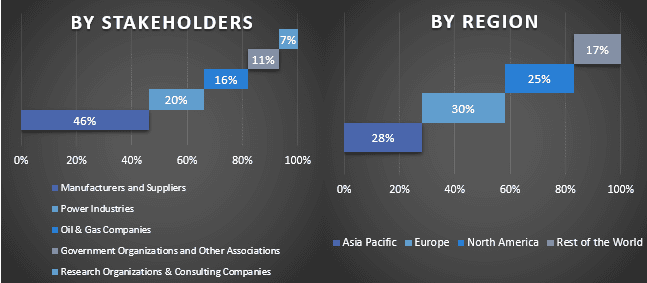
Market Engineering
The data triangulation technique was employed to complete the overall market estimation and to arrive at precise statistical numbers for each segment and sub-segment of the global regenerative turbine pump market. data was split into several segments & sub-segments post studying various parameters and trends in the areas of the vehicle type and technology in the global regenerative turbine pump market.
The main Objective of the Global Regenerative Turbine Pump Market Study
The current & future market trends of the global regenerative turbine pump market were pinpointed in the study. Investors can gain strategic insights to base their discretion for investments on the qualitative and quantitative analysis performed in the study. Current and future market trends determined the overall attractiveness of the market at a regional level, providing a platform for the industrial participant to exploit the untapped market to benefit from a first-mover advantage. Other quantitative goals of the studies include:
- Analyze the current and forecast market size of the regenerative turbine pump market in terms of value (USD). Also, analyze the current and forecast market size of different segments and sub-segments.
- Segments in the study include areas of the product, capacity, priming and application.
- Define and analyze the regulatory framework for the regenerative turbine pump
- Analyze the value chain involved with the presence of various intermediaries, along with analyzing customer and competitor behaviors of the industry.
- Analyze the current and forecast market size of the regenerative turbine pump market for the major region.
- Major countries of regions studied in the report include Asia Pacific, Europe, North America, and the Rest of the World
- Company profiles of the regenerative turbine pump market and the growth strategies adopted by the market players to sustain in the fast-growing market.
- Deep dive regional level analysis of the industry
Frequently Asked Questions FAQs
Q1: What is the current market size and growth potential of the global regenerative turbine pump Market?
Q2: What are the driving factors for the growth of the global regenerative turbine pump market?
Q3: Which segment has the largest share of the global regenerative turbine pump market by type?
Q4: Which region will dominate the global regenerative turbine pump Market?
Q5: Who are the key players operating in the global regenerative turbine pump market?
Related Reports
Customers who bought this item also bought




